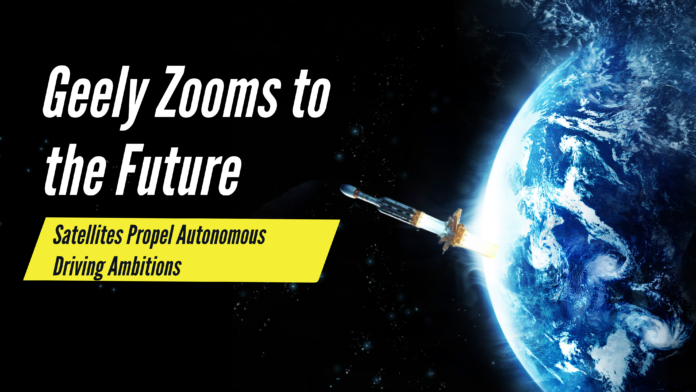The future of transportation is racing towards us, fueled by the promise of autonomous vehicles. But for these self-driving cars to truly explore the world with confidence, they need an ongoing and precise sense of location. Enter China’s Geely, which just launched 11 low-orbit satellites, marking a huge advance in the integration of space technology with autonomous driving. Buckle up as we delve into this amazing invention and investigate its possible impact on the roads of tomorrow.
Geely, a big player in the automobile industry, isn’t new to the space race. This current launch marks their second group of satellites, intending to establish a constellation of 240 by 2025. These satellites aren’t simply celestial decorations; they’re loaded with cutting-edge technology designed to supply autonomous vehicles with highly accurate navigation data. Imagine a car knowing where it is within a meter, even in locations with weak GPS signals—that’s the potential these satellites have.
But the benefits extend beyond precision navigation. These satellites can also operate as communication relays, ensuring seamless data flow between cars and infrastructure. This opens opportunities for capabilities like real-time traffic updates and synchronized moves, paving the way for smoother and safer autonomous journeys.
The significance of Geely’s work surpasses that of the firm itself. It acts as a beacon for the whole autonomous driving industry, showing the potential of satellite technology to address present issues. Localization, a vital part of self-driving, often confronts challenges with standard GPS. Satellites have a greater reach and a stronger signal, potentially solving this issue. Additionally, the scalability of satellite-based technologies could hasten the deployment of autonomous vehicles across varied geographies and terrains.
This technological advance isn’t happening in a vacuum. Other firms, like Elon Musk’s SpaceX and car titans like Ford, are also researching the use of satellites for autonomous driving. This healthy rivalry stimulates innovation and ensures that technology continues to evolve at a quick pace. However, teamwork shouldn’t be disregarded. Imagine a world where diverse firms’ satellite networks work together, creating a seamless web of communication for autonomous vehicles—a future loaded with possibilities.
Of course, no technical breakthrough is without its challenges. Technical difficulties, including assuring compatibility between different satellite networks and addressing potential security problems, need to be overcome. Additionally, ethical problems regarding data privacy and the potential exploitation of this technology must be addressed with appropriate legislation and responsible development.
Despite the hurdles, the potential of Geely’s satellite effort is apparent. It symbolizes a major leap towards a future where driverless vehicles navigate our roadways with precision and safety, powered by the stars above. As technology continues to progress, one thing is certain: the sky’s no longer the limit for the future of autonomous driving. So, fasten your seatbelts, and get ready for a ride that’s out of this planet!

